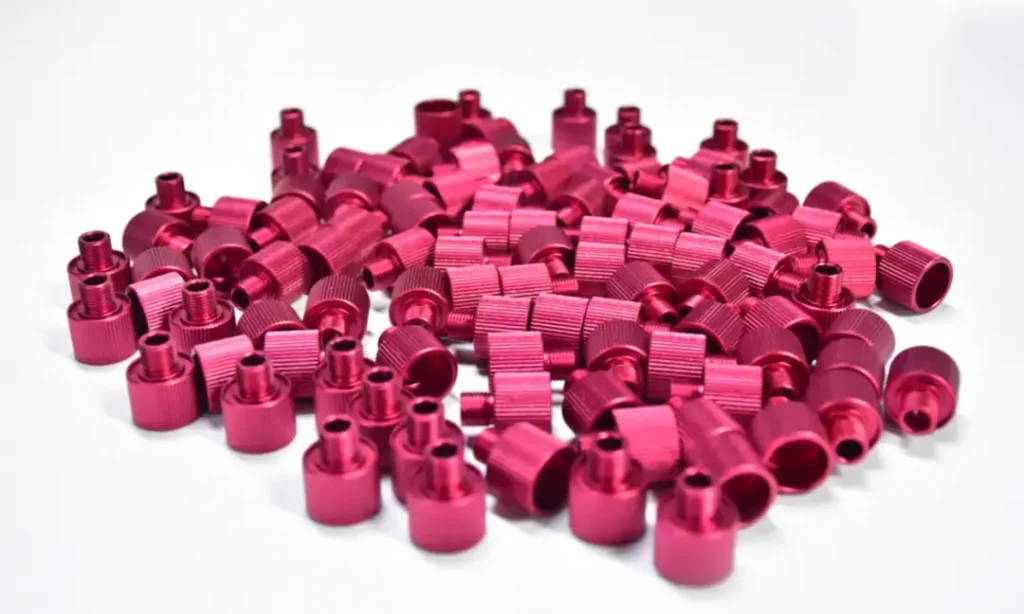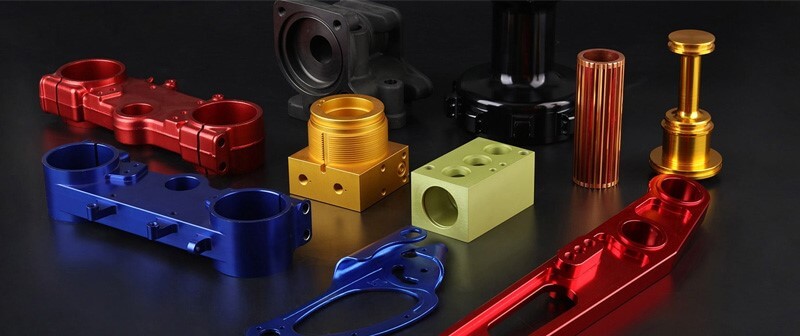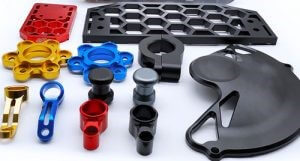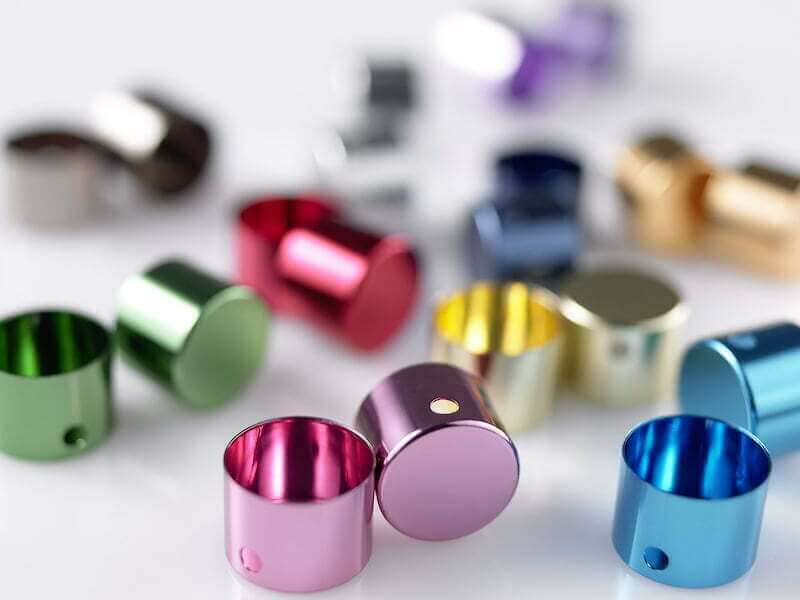An Introduction to Anodizing
Anodizing is a surface treatment process that provides a range of benefits to metals, most commonly aluminum. This electrochemical process not only enhances the aesthetics of the metal, but also provides a variety of functional advantages. Two prominent types of anodizing, called Type II anodizing and Type III anodizing, have different properties and applications.
1.Type II Anodizing: The Basics
Type II anodizing, commonly referred to as conventional or sulfuric acid anodizing, is a widely used method for finishing aluminum. The process involves immersing the aluminum in a sulfuric acid bath and applying an electric current. The result is an oxide layer that forms on the surface of the metal. Key features of Type II anodizing include:
1) Oxide Layer Thickness
Type II anodizing forms a relatively thin oxide layer, typically between 0.0001 and 0.001 inches.
2) Color Options
Type II anodizing offers a variety of color options for decorative applications. Dyes can be introduced during the process to achieve different colors.
3) Corrosion Resistance
While Type II anodizing offers enhanced corrosion resistance, it is not as stable in this regard as Type III.
4) Applications
Common applications include architectural elements, consumer products, and parts that require moderate corrosion resistance and aesthetics.

2.Type III Anodizing: A Hard Coating Solution
Type III anodizing, also known as hard coat anodizing or sulfuric acid hard coat anodizing, is a special form of anodizing that produces a significantly thicker, harder oxide layer. Key features of Type III anodizing include:
1) Oxide Layer Thickness
The oxide layer in Type III anodizing is much thicker than that in Type II anodizing, typically exceeding 0.002 inches. This provides superior hardness and durability.
2) Hardness
Type III anodized aluminum has a significantly higher hardness and is suitable for applications where wear resistance is critical.
3) Corrosion Resistance
Type III anodizing has excellent corrosion resistance and is suitable for use in harsh environments.
4) Color Options
While Type III anodizing is primarily available in clear or black, other color options can be achieved through dyes.
5) Applications
Type III anodizing can be applied to industries such as aerospace, military, and automotive, where components require high durability, wear resistance, and corrosion protection.

3.Advantages of anodizing
Anodizing offers a range of benefits beyond aesthetics. From enhanced corrosion resistance to improved wear resistance to a wide range of color customization platforms, it has become a key process across a wide range of industries, helping to extend the life of metal parts and improve their functionality. The following details its key benefits.
1) Corrosion resistance
Anodizing forms a protective oxide layer on the surface of the metal, significantly improving its corrosion resistance. This is especially important for metals exposed to harsh environmental conditions, such as metals used in outdoor structures or marine applications.
2) Durability and wear resistance
The anodized layer is not only corrosion-resistant, but also hard and durable. This hardness enhances the metal’s wear resistance, making it suitable for applications where the material is subject to friction, abrasion, or physical wear.
3) Aesthetic enhancement
Anodizing provides a versatile platform for enhancing the appearance of metal surfaces. The process allows for a variety of color options, and dyes can be introduced during the anodizing process to achieve different shades. This makes it a popular choice for decorative applications in architecture, consumer goods, and automotive design.
4) Improved Adhesion of Paints and Adhesives
The porous nature of the anodized layer enhances the adhesion of paints and adhesives. This makes it easier to apply additional coatings or bond the anodized metal to other materials, expanding its range of applications.
5) Electrical Insulation
Anodized aluminum has electrical insulating properties. This makes it a top choice for electronic applications where conductivity needs to be controlled or prevented, such as in the manufacture of electronic devices and components.

6) Easy Maintenance
Anodized surfaces are easy to clean and maintain. The sealed oxide layer prevents staining and is less likely to accumulate dirt, making them ideal for surfaces that require regular cleaning.
7) Environmentally Friendly
Anodizing is considered an environmentally friendly process. The use of sulfuric acid in the anodizing tank is strictly controlled, and the resulting anodized products are non-toxic and recyclable.
8) Increased Lubrication Retention
The porous nature of the anodized layer retains lubricants. This property is very advantageous in applications where lubrication is critical to performance, such as in certain mechanical parts.
In summary, both Type II and Type III anodizing processes play an important role in enhancing the properties of aluminum, but they meet different needs. Type II is suitable for decorative applications with moderate corrosion resistance, while Type III is suitable for demanding environments where hardness, durability, and excellent corrosion resistance are critical.
